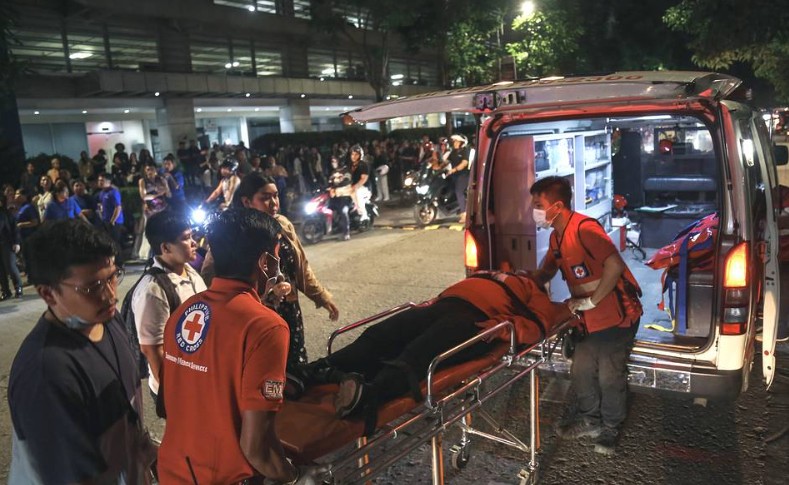Philippines Earthquake Death Toll Rises to 69 as Deliverance sweats Struggle Against Ruined structure
The death risk from the ruinous Philippines earthquake in Cebu has climbed to 69, authorities verified moments later, as saviors race against time amid destroyed roads, atrophied islands, and grim rain.
The 6.9 magnitude earthquake struck late Tuesday night, shaking the central fiefdom without warning. Buildings gave way.
Walls cracked. Families were buried beneath rubble. Entire communities were left in shock.
The earthquake’s epicentre was traced to just 19 kilometres northeast of Bogo City, a bustling littoral mecca of 90,000.
It was then that the tragedy struck hardest, with around half of all reported deaths being in the megacity alone.
Hospitals are at a breaking point. Civil Defense official Raffy Alejandro said the local medical centre has been “overwhelmed” as more than 150 injured survivors flood through its doors. Staff shortages and dwindling supplies have only worsened the crisis.
Pray for Philippines #EarthquakePH #earthquake pic.twitter.com/RyrNWeVWBI
— Joel Marie (@jmriegodedios) September 30, 2025
Rescuers, a mix of army troops, police forces, and civilian volunteers, are working around the clock with sniffer dogs and heavy machinery.
But the operation is fraught with challenges. Rain lashes the province intermittently, hampering visibility and softening unstable debris.
“We’re still in the golden hour of our search and rescue,” stressed Office of Civil Defense deputy administrator Bernardo Rafaelito Alejandro IV.
“There are still many reports of people who were pinned or hit by debris.”
Every passing hour counts. Every aftershock deepens the risk.
In San Remigio, another city destroyed by the earthquake, officers have declared a state of disaster. Survivors are contending for basic food, clean water, tarpaulins, and energy.
Deliverance brigades are often ineffective for heavier ministry tasks, such as clearing remains and reaching trapped residents.
Among the destroyed landmarks is a historic church that had stood for over a century. A sports complex, once a place of joy and community, has also collapsed; both sites are now grim reminders of lives lost.
President Ferdinand Marcos Jr has vowed immediate assistance. Cabinet secretaries are already on the ground, coordinating relief supplies and support for stricken families.
“Swift action” is the promise, though logistics remain a daunting obstacle.
The Philippines, perched on the volatile Pacific “Ring of Fire,” has endured countless tremors before.
But this one, with its shallow depth, sheer force and destructive aftershocks, stands as one of the deadliest in recent memory.
For now, the focus remains survival. Thousands stay in new harbors. Others cleave to hope as saviors claw through twisted concrete and shattered timber.
Cebu has been shaken to its core. And yet, amid grief, the Filipino spirit of adaptability is once again on display, neighbours helping neighbours, nonnatives offering hands in the dark.






